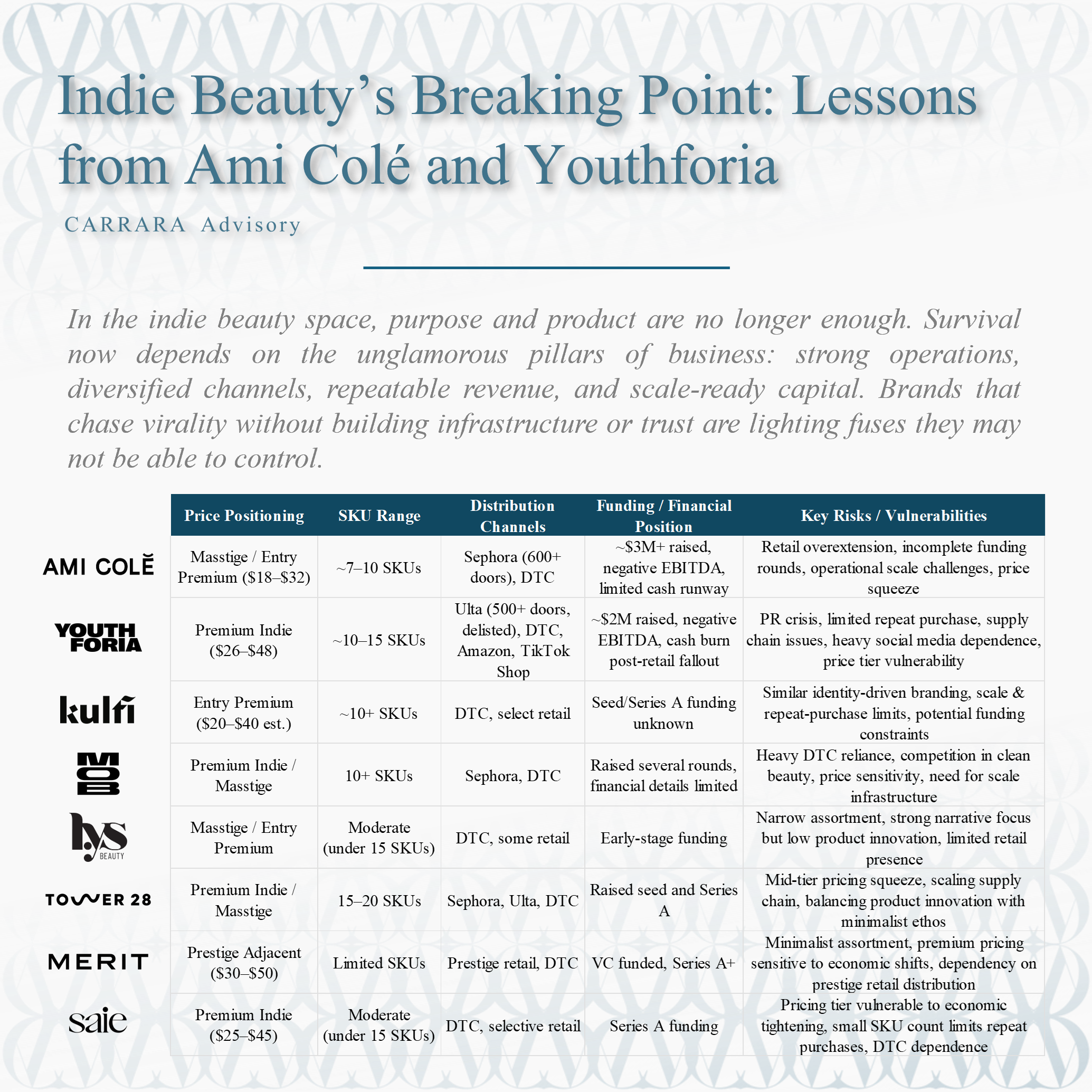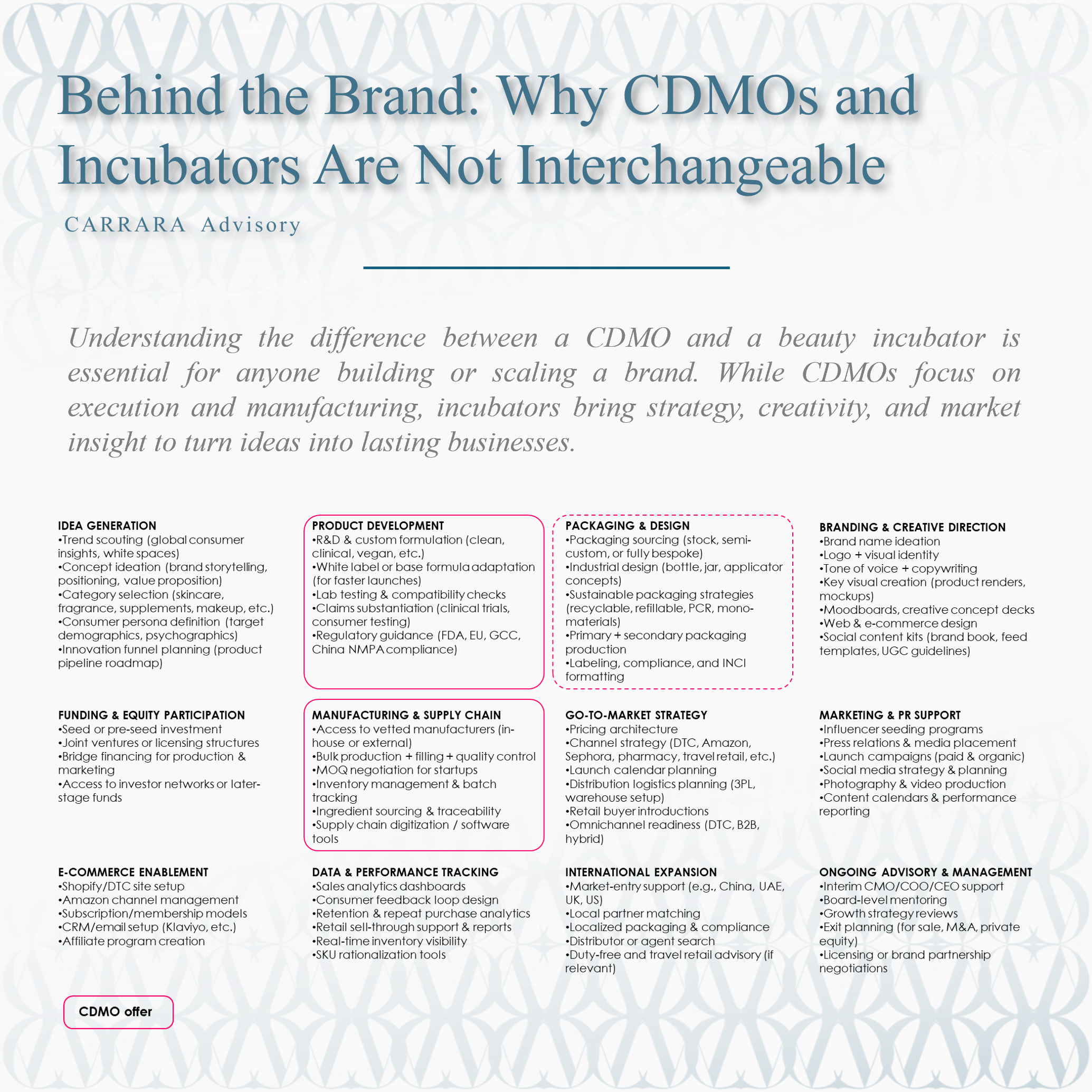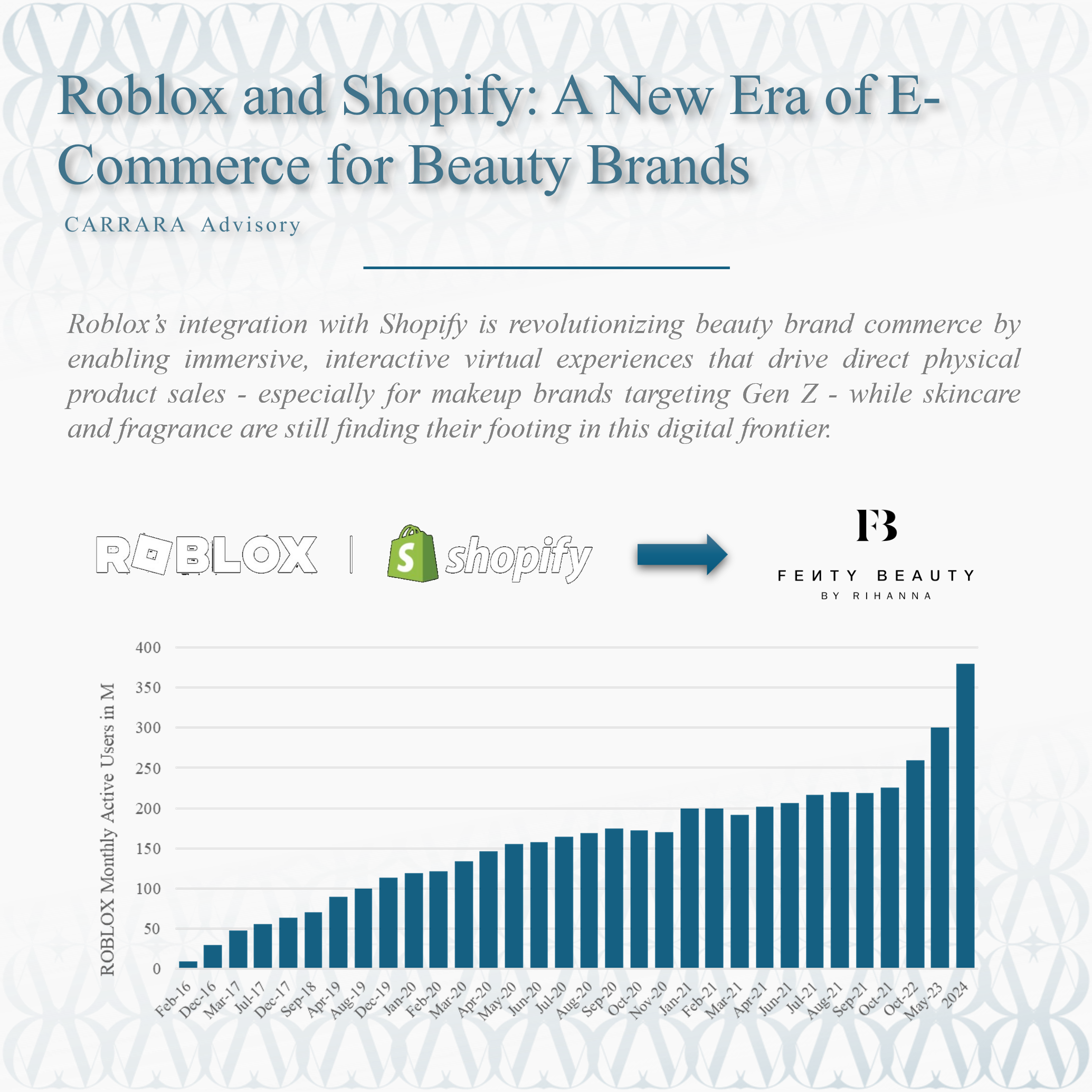
Intercos: The Unseen Force Powering the World’s Biggest Beauty Brands
Intercos doesn’t sell to consumers, yet it shapes what millions apply daily. With strategic acquisitions, a “glocal” footprint, and a laser focus on R&D, Intercos has gone from Milan startup to global force powering most of the world’s top 30 beauty brands and hitting €1B+ revenues despite major disruptions.

Indie Beauty’s Breaking Point: Lessons from Ami Colé and Youthforia
In the indie beauty space, purpose and product are no longer enough. Survival now depends on the unglamorous pillars of business: strong operations, diversified channels, repeatable revenue, and scale-ready capital. Brands that chase virality without building infrastructure or trust are lighting fuses they may not be able to control.

Behind the Brand: Why CDMOs and Incubators Are Not Interchangeable
Understanding the difference between a CDMO and a beauty incubator is essential for anyone building or scaling a brand. While CDMOs focus on execution and manufacturing, incubators bring strategy, creativity, and market insight to turn ideas into lasting businesses.

Stylist Roots, Celebrity Influence: The New Wave of Haircare Brands
Celebrity and hairstylist-founded haircare brands have skyrocketed in influence, evolving from niche salon lines to powerful lifestyle icons championing authenticity, inclusivity, and sustainability. This transformation is reshaping the beauty market.

Medik8: From Pangea Laboratories to a Skincare Powerhouse – The Story of Growth and Transformation
While all eyes are on the Rhode x e.l.f. deal, L’Oréal’s rumored €1B acquisition of Medik8 raises eyebrows - impressive growth, yes, but at a valuation at 7.8x revenues and 23.2x EBITDA looks quite stretched… unless we miss something!

Roblox and Shopify: A New Era of E-Commerce for Beauty Brands
Roblox’s integration with Shopify is revolutionizing beauty brand commerce by enabling immersive, interactive virtual experiences that drive direct physical product sales - especially for makeup brands targeting Gen Z - while skincare and fragrance are still finding their footing in this digital frontier.

Growth Slows, Costs Rise: The Beauty Industry’s Next Great Challenge
The beauty industry demonstrated resilience in 2024 but faces slower growth in 2025, with success relying on agility, technology investment, and navigating economic and regulatory challenges.

Bridal Fashion: Where Emotion Meets Billion-Dollar Business
The wedding dress market, a $60 billion industry driven by emotion, craftsmanship, and evolving consumer trends, is witnessing a dynamic shift as luxury designers, mid-tier brands, mass-market retailers, and disruptive newcomers compete for dominance.

Location Matters: How Corporate and Personal Taxes Shape LLC’s Financials
Choosing the right LLC jurisdiction is instrumental for optimizing the Net Personal Income / Revenue Ratio, minimize tax burdens and maximize personal income. Switzerland emerges as the most favourable option.

The Resilient Beauty Industry: Key Takeaways from CY 2024
The beauty industry demonstrated resilience amidst challenges, with agile companies leading growth, while major players maintained steady performance despite headwinds.

The Middle East: A $60 Billion Opportunity for Beauty Brands
The Middle East, a region rich in history and culture, is a rapidly growing market for the beauty industry, valued at over $46 billion and driven by rising disposable incomes, urbanization, and a young, tech-savvy population. Brands looking to succeed must navigate cultural nuances, regulatory requirements, and diverse distribution channels, while leveraging digital platforms to connect with consumers.

Beauty Incubators: Nurturing Innovation in the Global Beauty Industry
Beauty incubators play a crucial role in nurturing innovation within the global beauty industry by providing emerging brands with mentorship, resources, and funding to overcome challenges and achieve commercial success. They shape the future of beauty through category diversification, technological integration, and strategic partnerships.

How Much It Really Costs to Launch a Beauty Brand
Launching a successful beauty brand to $5M in revenue within two years requires an investment of $3M to $8M, depending on the category (skincare, makeup, or fragrance) and key factors like brand positioning, formulation complexity, marketing strategy, and distribution model.

Nature’s Best-Kept Secret: How Adaptogens Are Transforming Beauty
Adaptogens are natural ingredients gaining popularity in the beauty industry for their ability to help the skin combat stress, inflammation, and environmental aggressors. These powerful botanicals are being incorporated into beauty products worldwide, offering holistic solutions for achieving healthier, more resilient results.

The Rise of Neurocosmetics: Revolutionizing Beauty and Wellness
Neurocosmetics revolutionize skincare by blending beauty and emotional wellness, leveraging neuro-active ingredients like adaptogens and peptides to enhance skin health and reduce stress. This growing market, projected to reach $3-4 billion by 2033/2034, is led by innovative brands like JustHuman and Arkana Cosmetics.

The Brand Positioning Divide. Store Counts vs Revenues.
In the fashion and luxury industry, there’s a clear divide between high-end luxury brands and more accessible ones when it comes to store count and revenue. High-end brands show a steep, exponential growth curve, with revenue skyrocketing as the number of stores increases. In contrast, accessible brands exhibit a more linear growth, with a smaller slope. This analysis considers over 100 fashion and luxury brands.

The Rise of the Chinese Beauty Empire and its Challenges
China's beauty market is booming, projected to surpass $77 billion by 2028, driven by digital innovation, rising local brands, and shifting consumer preferences. But it’s not all smooth sailing - brands face fierce competition, evolving regulations, and increasingly discerning customers.

The $14 Billion Beauty Revolution driven by AI
AI is revolutionizing the beauty industry, driving a projected market expansion from $2.9 billion in 2022 to $14 billion by 2031, with a CAGR of 19.3%. From personalized skincare recommendations to streamlined supply chains, AI is reshaping how brands innovate, engage consumers, and achieve sustainability.

Cracking the Code: How Niche Beauty Brands Win Investors
Niche beauty brands are transforming the investment landscape with their focus on authenticity, sustainability, and personalization. These brands offer high-growth potential for investors, however, attracting funding requires a compelling story, robust financial metrics, and clear scalability.

The fragrance landscape is changing in Spain
The fragrance landscape in Spain is undergoing significant transformation, driven by evolving consumer preferences, shifting product segments, and changing distribution channels. Luxury, niche, and sustainable fragrances are competing for market share, with e-commerce playing an increasingly prominent role. Additionally, generational differences, along with the urban vs. rural divide, are influencing buying habits, making Spain's fragrance market dynamic and diverse.